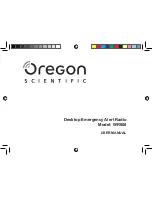
Product End Of Life | 491
Aprisa SR+ User Manual 1.11.1
14.
Product End Of Life
End-of-Life Recycling Programme (WEEE)
The WEEE Directive concerns the recovery, reuse, and recycling of electronic and electrical equipment.
Under the Directive, used equipment must be marked, collected separately, and disposed of properly.
4RF has implemented an end-of-life recycling programme to manage the reuse, recycling, and recovery of
waste in an environmentally safe manner using processes that comply with the WEEE Directive (EU Waste
Electrical and Electronic Equipment 2002/96/EC).
The WEEE Symbol Explained
This symbol appears on Electrical and Electronic Equipment (EEE) as part of the WEEE (Waste EEE) directive.
It means that the EEE may contain hazardous substances and must not be thrown away with municipal or
other waste.
WEEE Must Be Collected Separately
You must not dispose of electrical and electronic waste with municipal and other waste. You must separate
it from other waste and recycling so that it can be easily collected by the proper regional WEEE collection
system in your area.
YOUR ROLE in the Recovery of WEEE
By separately collecting and properly disposing of WEEE, you are helping to reduce the amount of WEEE that
enters the waste stream.
One of the aims of the WEEE directive is to divert EEE away from landfill and encourage recycling. Recycling
EEE means that valuable resources such as metals and other materials (which require energy to source and
manufacture) are not wasted. Also, the pollution associated with accessing new materials and manufacturing
new products is reduced.
EEE Waste Impacts the Environment and Health
Electrical and electronic equipment (EEE) contains hazardous substances which have potential effects on
the environment and human health. If you want environmental information on the Aprisa SR+ radio, contact
us (on page 19).
Summary of Contents for Aprisa SR+
Page 1: ...January 2021 Version 1 11 1b ...
Page 2: ......
Page 10: ......
Page 72: ......
Page 86: ......


































